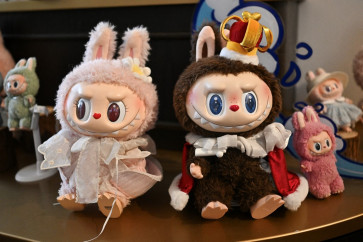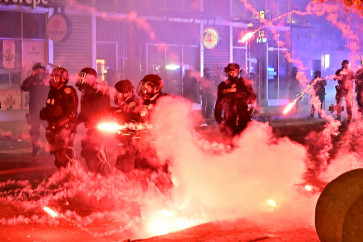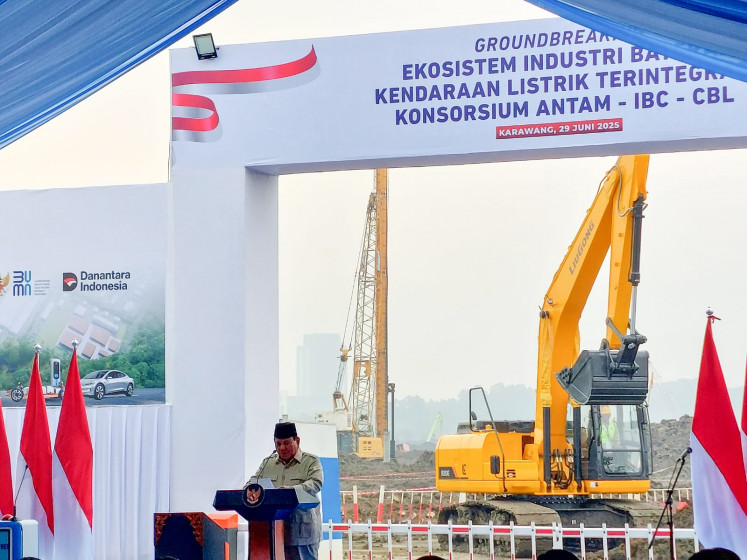Popular Reads
Top Results
Can't find what you're looking for?
View all search resultsPopular Reads
Top Results
Can't find what you're looking for?
View all search resultsLok Baintan floating market leads revival of river tourism
Traditional floating markets are typical of South Kalimantan. They are also known for female sellers aboard rowboats wearing broad-brimmed pandanus hats.
Change text size
Gift Premium Articles
to Anyone
 Traditional floating markets are typical of South Kalimantan. They are also known for female sellers aboard rowboats wearing broad-brimmed pandanus hats. (JP/Syofiardi Bachyul Jb)
Traditional floating markets are typical of South Kalimantan. They are also known for female sellers aboard rowboats wearing broad-brimmed pandanus hats. (JP/Syofiardi Bachyul Jb)
H
ajjah Bustam, 45, approached a klotok (motorboat) aboard her jukung(rowboat). Wearing a headscarf, she rowed toward the motorboat to offer its occupant various fruits and dried fish displayed in woven baskets.
“I returned from Saudi Arabia as a migrant worker six months ago and I’ve been selling produce since last month because the market here is getting more crowded with tourists, while there were only local buyers in the past,” Hajjah told The Jakarta Post as she maneuvered her klotok.
She is one of the dozens of woman traders at pasar terapung (floating market) Lok Baintan in Banjar regency, South Kalimantan. They are members of the Banjar community, one of the ethnic groups of Kalimantan, who are adept at maneuvering their boats on the Martapura River.
Monalia, 50, is another frequent trader at Lok Baintan, selling oranges from her own garden and other fruits grown by her neighbors. Her home is located upstream, which makes it easy for her to row downstream to the market every morning. To return home, she has her boat tugged by a klotok for a fee of only Rp 2,000 (15 US cents).
Established in the 18th century during the reign of the Banjar sultanate, Muara Kuin floating market was once the most famous of its kind. It still exists today, located in the provincial capital of Banjarmasin and downstream of the Kuin River, which flows into the Barito River, the largest in South Kalimantan with a span of 1.2 kilometers.
Read also: Slank named North Kalimantan tourism ambassadors
Rivers were an essential part of the Banjar people’s lives, acting as vital transportation lanes and places of commerce. Land routes were reduced to a minimum due to the regency’s peat and swamp areas, while houses, food stalls and mosques were built on riversides.
However, with rapid urban development, including the construction of malls and mini marts, the Kuin floating market in the city center has been in decline, with the number of transactions taking place shrinking each year. Trading at Kuin now only lasts from dawn to 7 a.m. local time.
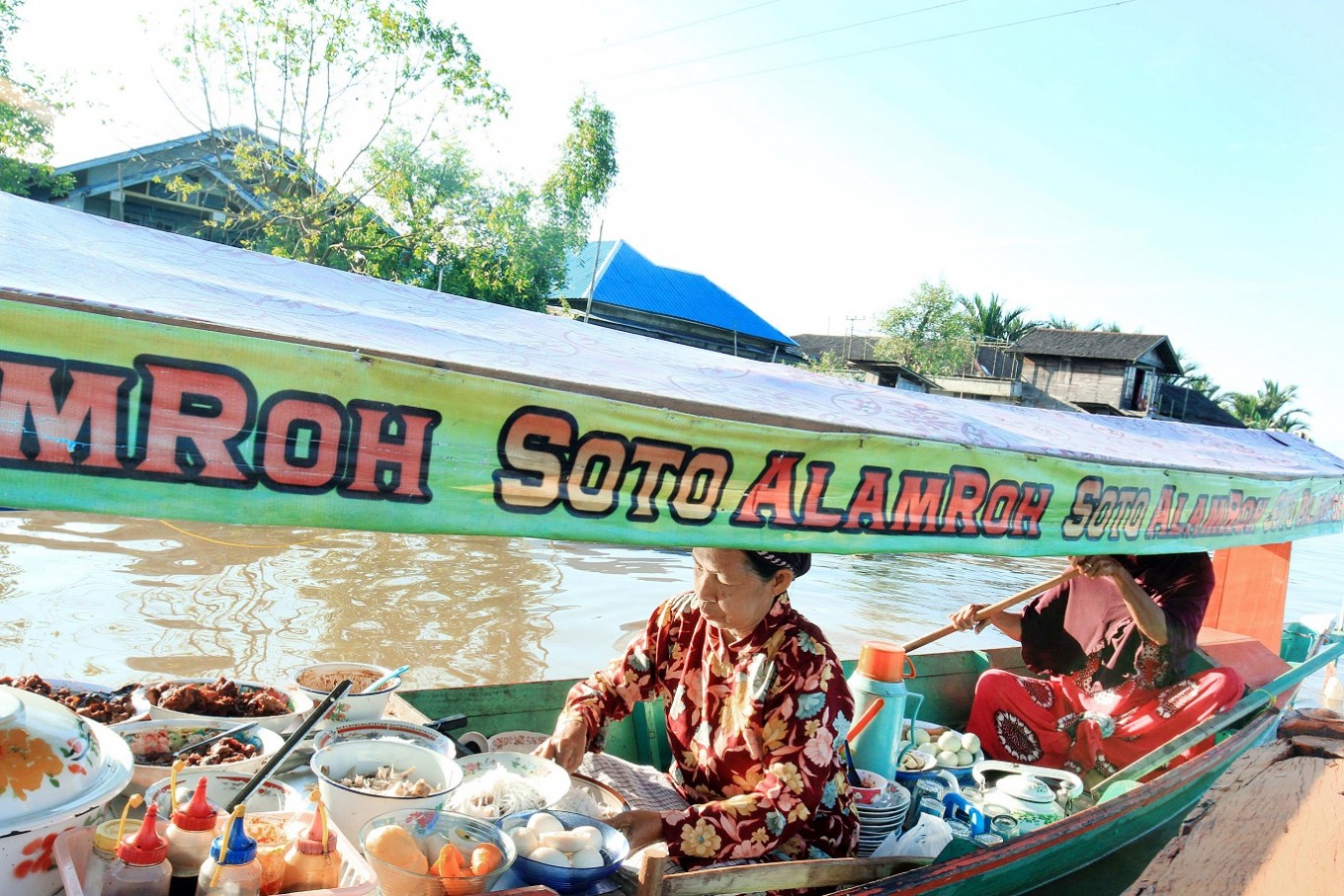
However, Lok Baintan floating market is gaining popularity as a favorite destination for tourists to enjoy the sensation of buying groceries while floating on water. This market is also believed to have existed since the Banjar sultanate. It is located upstream of the Martapura River, which is 211 meters wide.
It takes 30 minutes by klotok from the city center of Banjarmasin to reach Lok Baintan. These small motorboats are readily available for hire at Warung Soto Ayam Bang Amat, a chicken soup eatery on Jl. Banua Anyar.
The boat — with a low roof enabling people to sit on top — has a capacity of 30 passengers. Tourists can also charter it for return trips to the market (about an hour’s visit) for only Rp 300,000.
“But foreign tourists prefer to charter a smaller boat at half the price,” said Bang Haji Ahmad, owner and operator of the klotok hired by The Post.
To enjoy Lok Baintan’s activities, which take place from 6 a.m. to 8 a.m., visitors should depart at 5 a.m. Along the way, rows of wooden settlements erected above the water can be seen on both sides of the river. Residents use river water to bathe and wash their clothes. Food stalls and mosques can be seen at intervals, in addition to traffic signs at river edges to regulate water traffic.
Read also: Ministry to promote Pontianak for cross-border tourism
“This is butter fruit [Diospyros blancoi], it’s soft like butter and tastes good. It’s locally grown,” said Nurul, a seller, offering a fist-sized fruit that is dark red in color.
With her ability to persuade and chat with prospective buyers, she charges Rp 10,000 for a single butter fruit. She also sells local oranges at Rp 50,000 per basket, costing merely Rp 1,000 per fruit.
Hungry travelers can also find traditional food and snack “stalls” aboard rowboats, offering Banjar dishes with yellow rice to klotok passengers. There’s also a vendor offering a unique chicken soup dish called Soto Alam Roh.
“Alam Roh is a hamlet not far from here,” said the seller, a woman aged about 60, referring to a well-known area in Paku Alam village, Banjar.
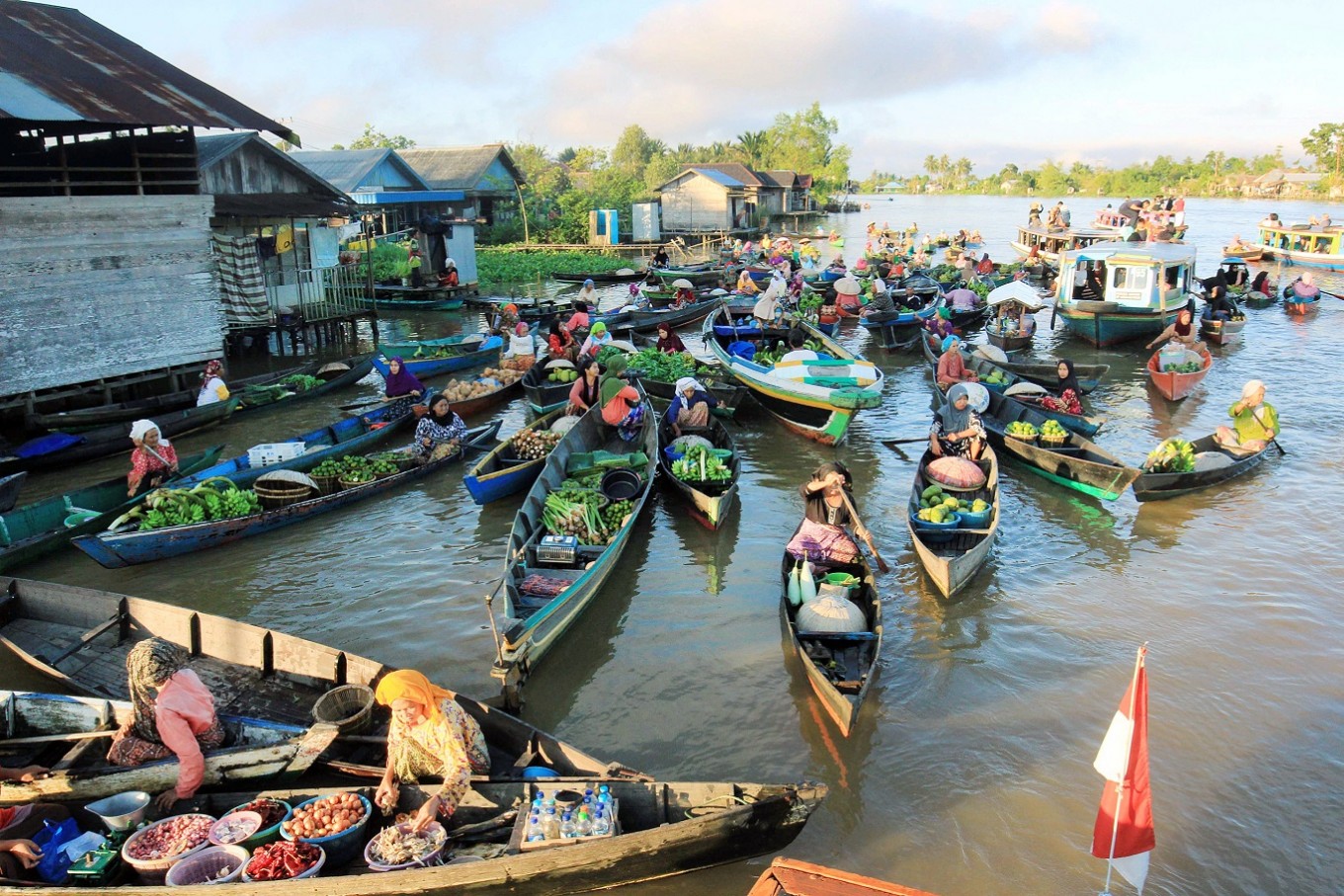
The floating market also sells different kinds of fish, rice, eggs, cooking oil, sugar, chili, garlic and vegetables. The traders, too, buy each other’s merchandise and commodities to meet their household needs. Before money became a method of payment, the Banjar people bartered goods to fulfill their daily requirements.
Some vendors even offer textiles, bags, sandals, shoes and rice powder to offer. Those who cater especially to tourists sell souvenirs in the form of miniature boats.
How long this market will continue to exist is a question frequently asked by the people of South Kalimantan, particularly after the decline of Muara Kuin.
Traditional floating markets face the threat of rapid infrastructure development and a lack of regeneration among traders. Most sellers today are women over 35 years of age, while their succeeding generations are reluctant to shop at floating markets and prefers to visit more modern stores on land.
However, the government has said it would not allow the floating market to disappear from Banjar history. This tourism icon of South Kalimantan is being rescued by the creation of a new floating market for tourists in Siring, on the Martapura River along Jl. Piere Tendean, which opens on Sundays.
Sellers have been invited to participate and klotok facilities for tourists are being provided for tourists to enjoy the market’s distinctive atmosphere. In September last year, the South Kalimantan provincial government organized a Floating Market Cultural Festival in the same location.

